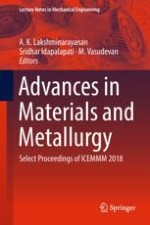2019 | OriginalPaper | Chapter
Influence of Copper Chills and Pouring Temperature on Mechanical Properties of LM6 Castings
Authors : D. M. Wankhede, B. E. Narkhede, S. K. Mahajan, C. M. Choudhari
Published in: Advances in Materials and Metallurgy
Publisher: Springer Singapore
Activate our intelligent search to find suitable subject content or patents.
Select sections of text to find matching patents with Artificial Intelligence. powered by
Select sections of text to find additional relevant content using AI-assisted search. powered by
